Day 29: Mastering Terraform Commands Part 2
Apr 10, 2025
•08:16 PM GMT+8

This blog is a continuation of Day 28: Mastering Terraform Commands Part 1. In this part, we will go further by modifying infrastructure using Terraform commands, introducing variables and outputs, and working with multiple files. By the end of this blog, you will be more comfortable managing infrastructure with Terraform.
Task: Explore Terraform Commands Part 2
Terraform Apply - Update
In this section, we will update the resource group we created previously. We will change the location from "East US" to "West US" in the Terraform configuration file.
resource "azurerm_resource_group" "example" {
name = "example"
location = "West US" # OR "westus"
tags = {
environment = "dev"
}
}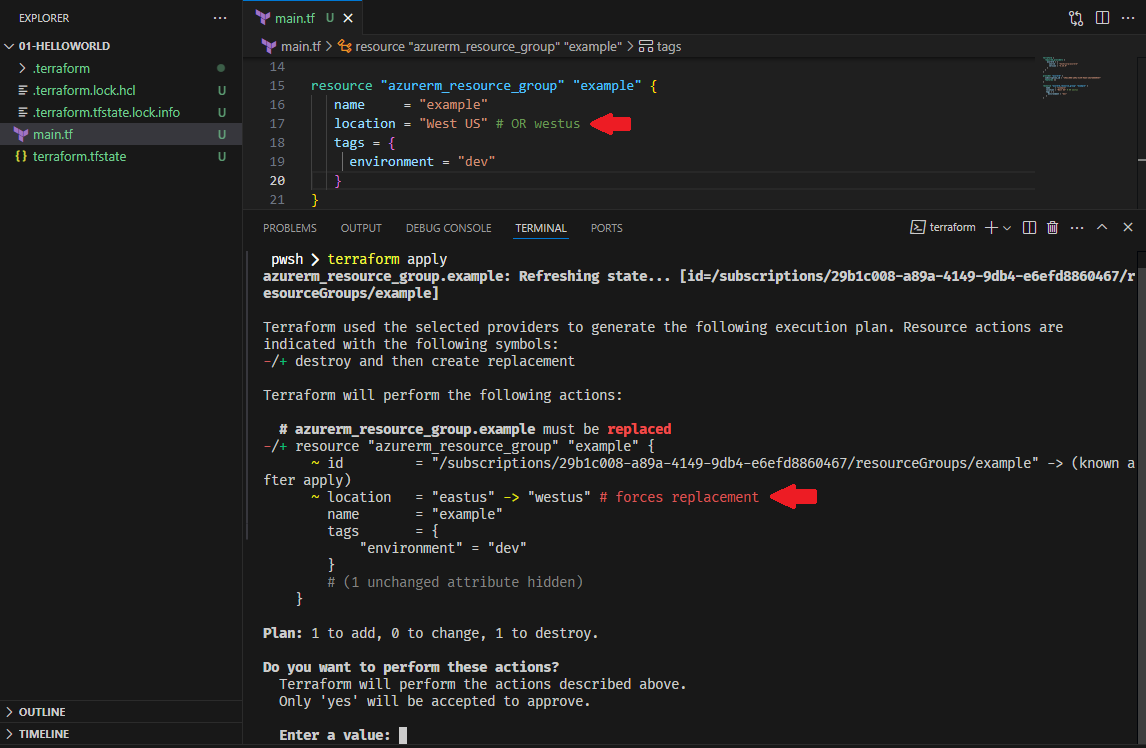
Why does it destroy and recreate?
Terraform treats changes in immutable properties, like location, as destructive changes. The resource group cannot be moved across regions, so Terraform will destroy the old one and create a new one.
💡 In Azure Portal, the location property for a resource group cannot be updated once it is created.
The only thing you can update in a resource group is the tag
If you only want to update tags without affecting the resource group location, modify the tags like below:
resource "azurerm_resource_group" "example" {
name = "example"
location = "East US" # OR "eastus"
tags = {
environment = "production"
}
}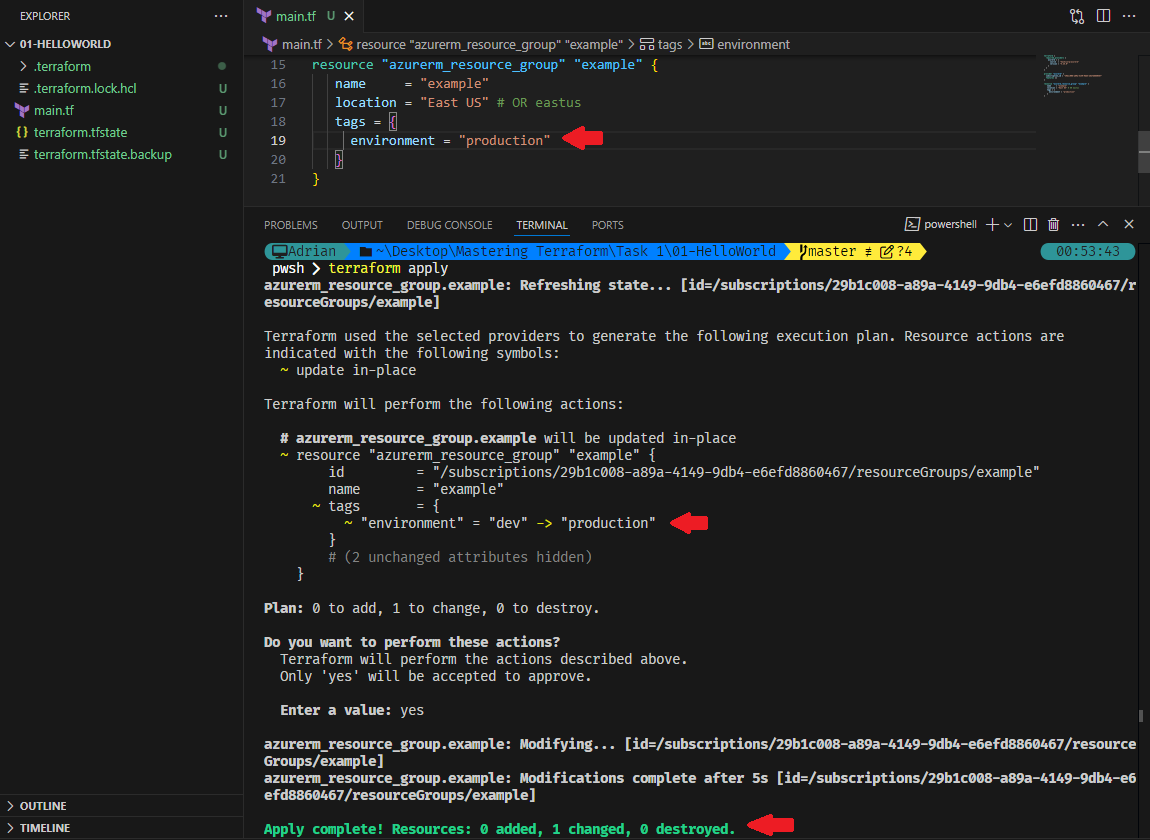
This will safely update the metadata (tags) without destroying the existing resource group.
Verify in Azure Portal for changes of tags
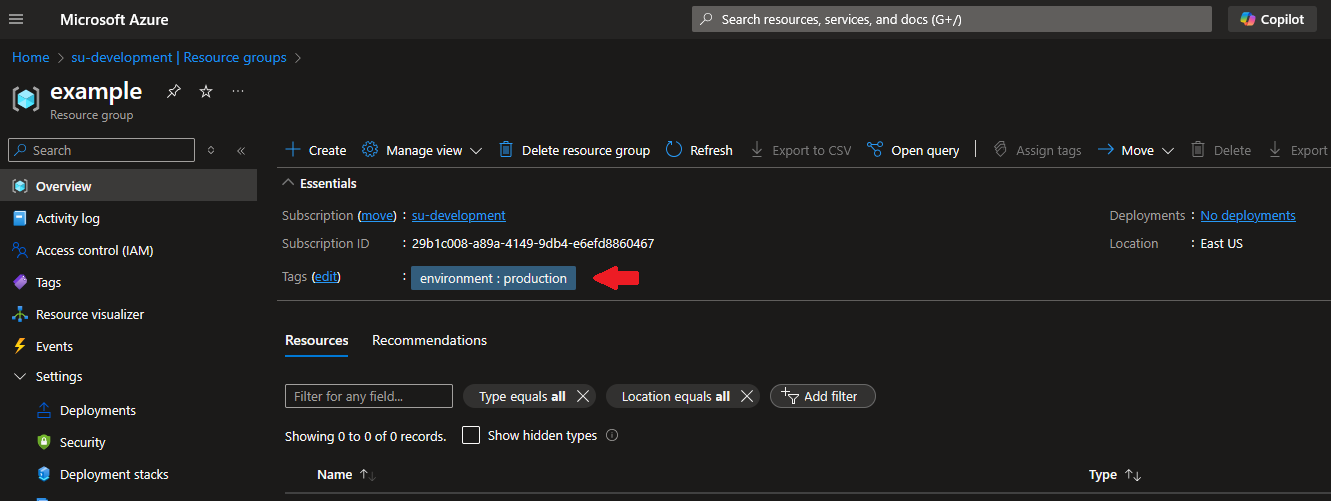
Terraform Variables
Terraform variables allow you to parameterize values, making your configuration reusable and easier to maintain. Here's an example:
variable "azregion" {
type = string
}
resource "azurerm_resource_group" "example" {
name = "example-rg"
location = var.azregion
tags = {
environment = "dev"
}
}Apply the variable using:
terraform apply -var="azregion=WestUS"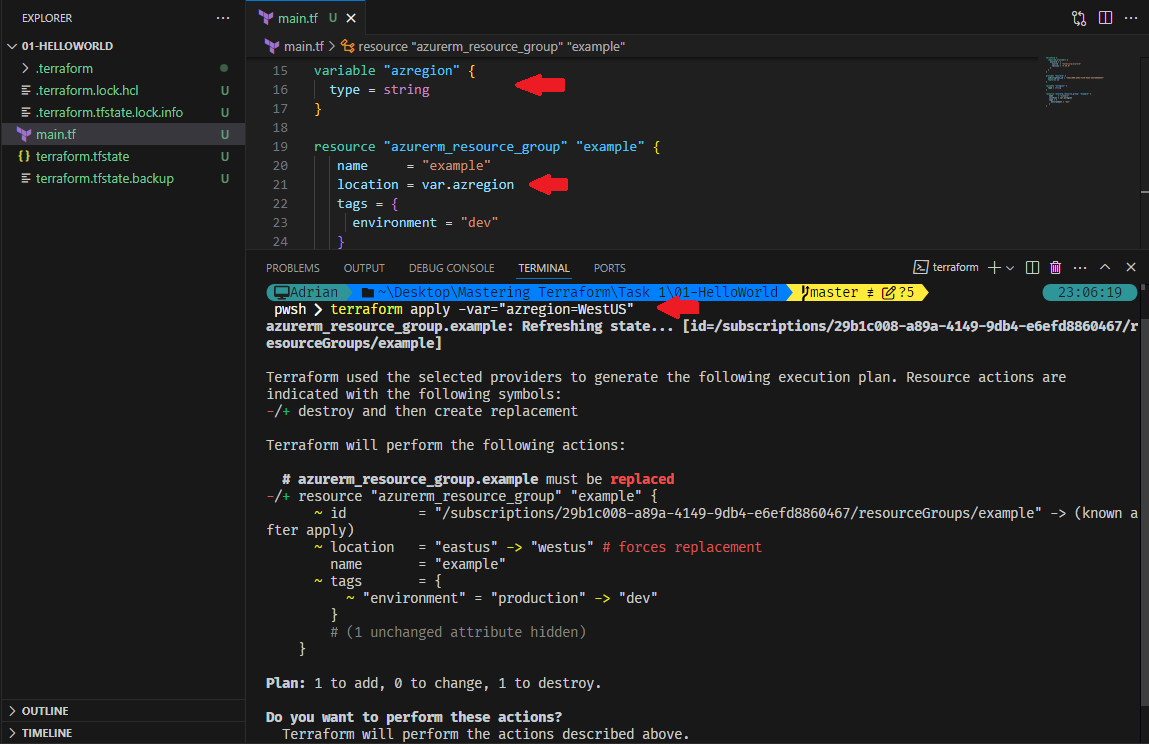
Terraform tfvars
The terraform.tfvars file allows you to define variable values separately, making your Terraform commands cleaner and easier to manage. This is especially useful in environments where consistency and reusability are essential.
To avoid passing variables manually each time, define them in a terraform.tfvars file:
azregion = "WestUS"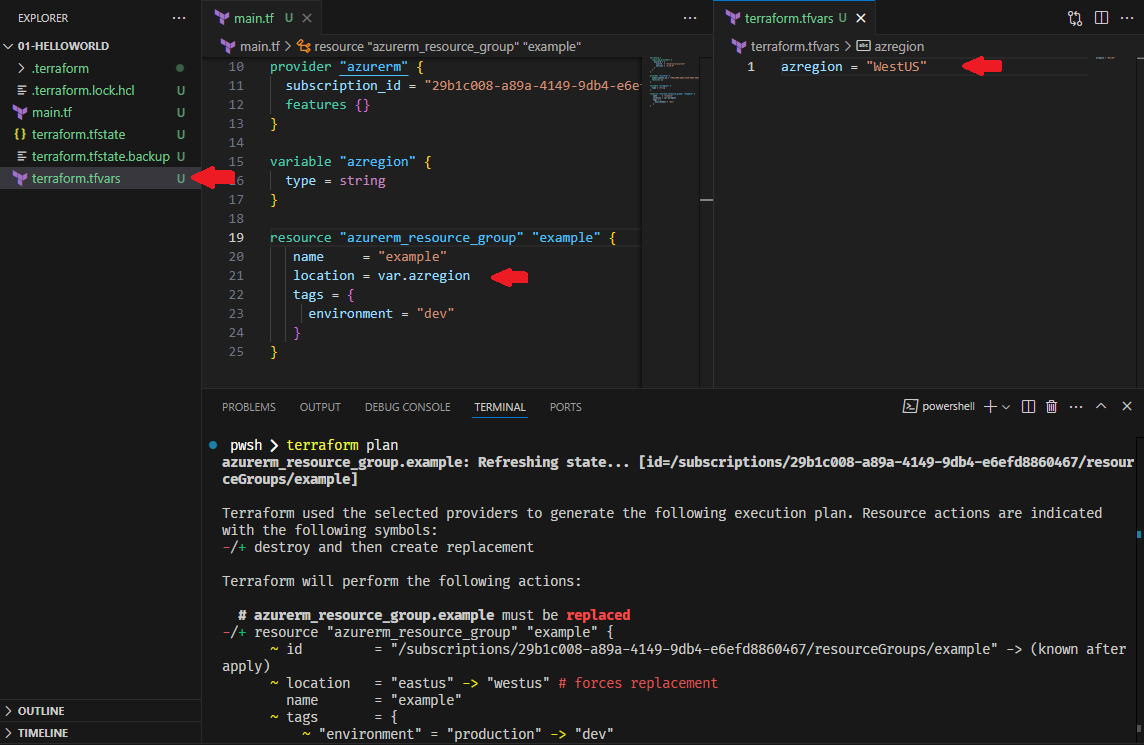
Terraform will automatically load this file when running commands like terraform plan or terraform apply.
Terraform Locals
Locals let you define values that can be reused throughout your configuration, often used for naming or computed logic.
locals {
env = "development"
}
resource "azurerm_resource_group" "example" {
name = "example"
location = "East US" # OR "eastus"
tags = {
environment = local.env
}
}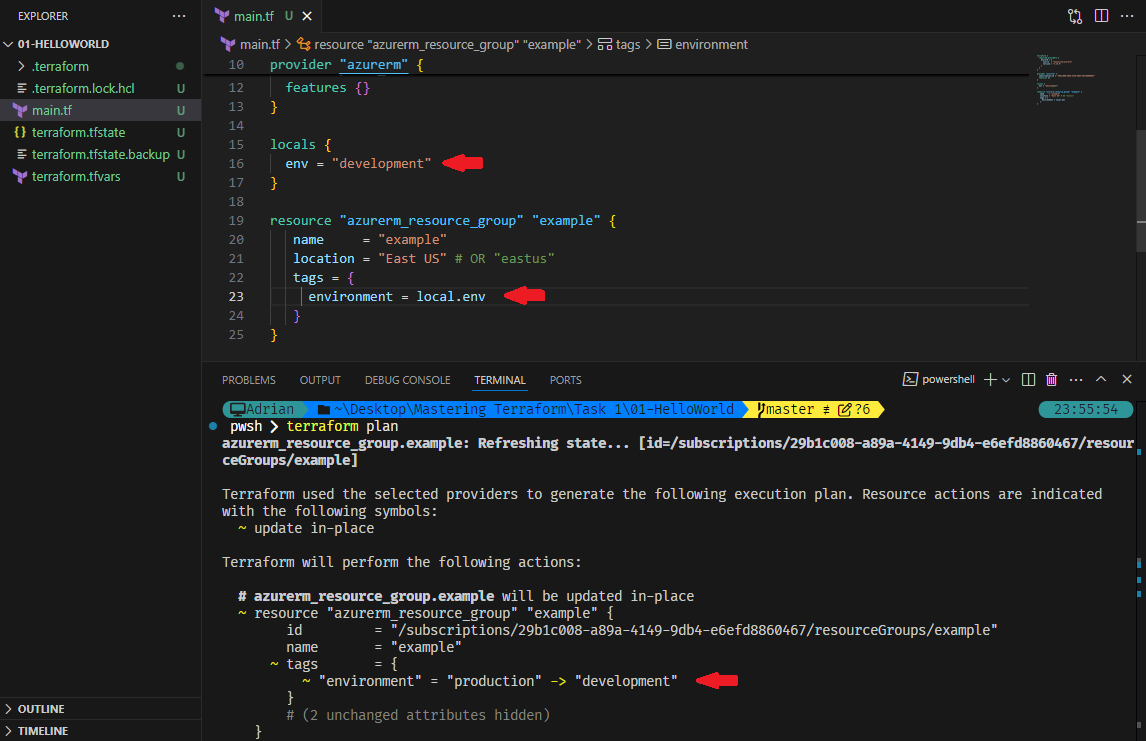
Terraform Outputs
Terraform output values are used to return useful information after applying your configuration.
output "rg_name" {
value = azurerm_resource_group.example.name
}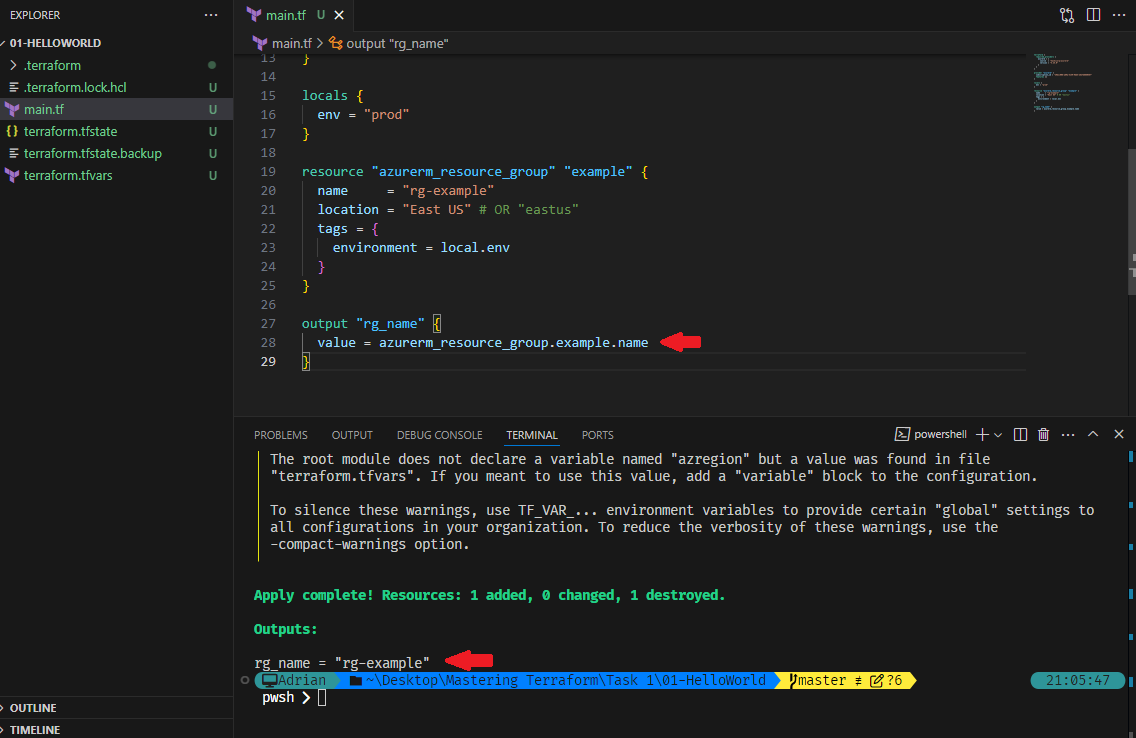
Terraform Show
Use terraform show to view the full Terraform state in a readable format. It's useful for reviewing the infrastructure after applying changes.
terraform show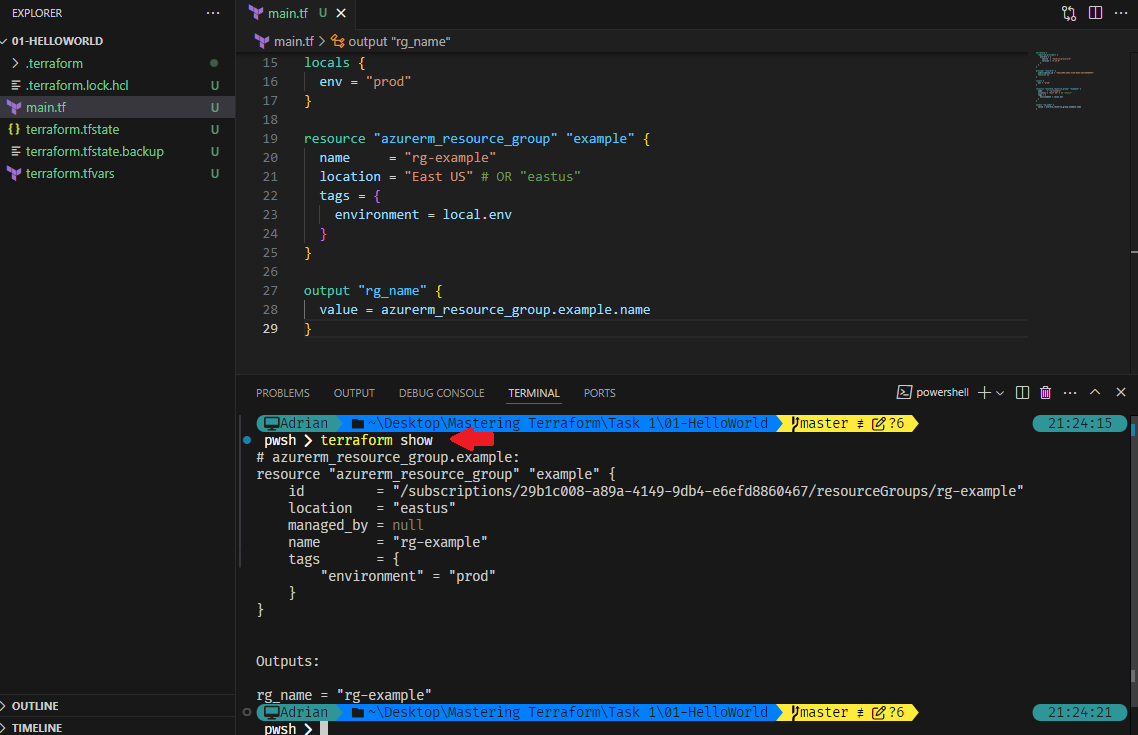
Multiple Files in Terraform
Terraform allows splitting configurations across multiple .tf files. These are loaded automatically, improving organization:
main.tf: Contains your main resource definitions.variables.tf: Holds all input variable declarations.outputs.tf: Stores output values that you want to extract after provisioning.provider.tf: Defines provider configurations, such as Azure, AWS, GCP, etc.locals.tf: Declares reusable values (locals) to simplify references across your configuration.
This modular approach not only improves readability but also makes your configuration scalable and easier to manage as your infrastructure grows.
Here is the example organized structure with multiple .tf file:
├── 01-HelloWorld
│ ├── main.yml
│ ├── locals.yml
│ ├── outputs.yml
│ └── variables.yml
│ └── provider.ymlmain.tf
resource "azurerm_resource_group" "example" {
name = "rg-example"
location = var.azregion
tags = {
environment = local.env
}
}variables.tf
variable "azregion" {
type = string
default = "eastus"
}outputs.tf
output "rg_name" {
value = azurerm_resource_group.example.name
}provider.tf
terraform {
required_providers {
azurerm = {
source = "hashicorp/azurerm"
version = "4.25.0"
}
}
}
provider "azurerm" {
subscription_id = "YOUR_AZ_SUBSCRIPTION_ID"
features {}
}locals.tf
locals {
env = "prod"
}Terraform Destroy
The terraform destroy command removes all resources tracked by your state file.
terraform destroy⚠️ Warning: This action is irreversible and should be used with caution.
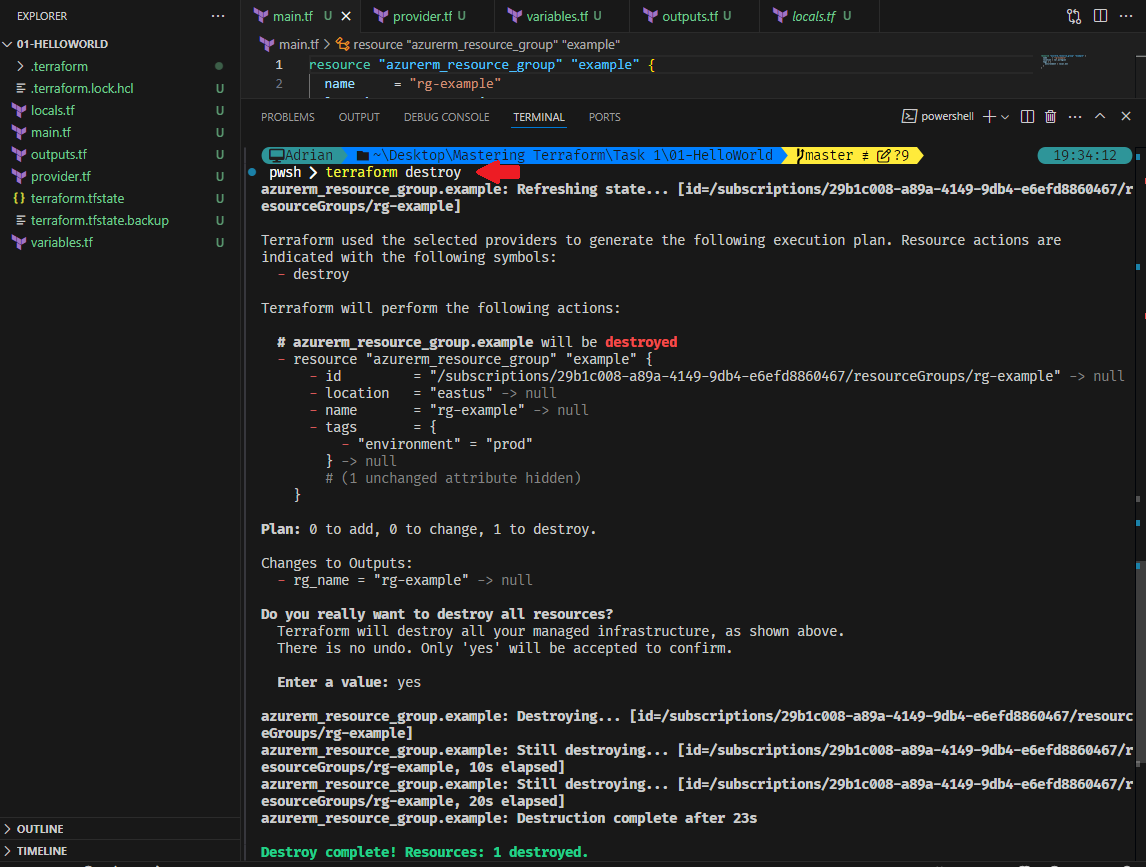
Conclusion
In this blog, we continued our deep dive into Terraform by exploring advanced commands and practices. We covered how to update resources, use variables and tfvars, work with locals and outputs, and organize files more efficiently.
In the next blog, we will learn more about Terraform State management.
Day 29: Mastering Terraform Commands Part 2
Explore Terraform variables, tfvars, locals, outputs, and file structure to manage infrastructure effectively and modularly.
For the passion of automated cloud solutions.
Subscribe to get the latest posts. I mostly write about Backend (Python/Bash), DevOps and Linux.